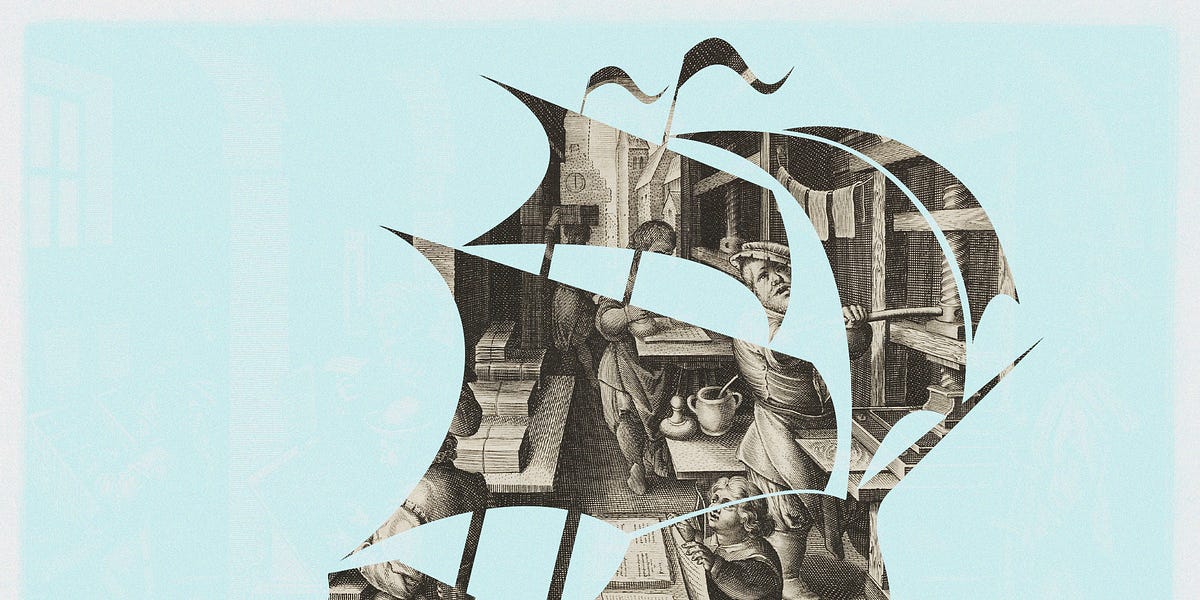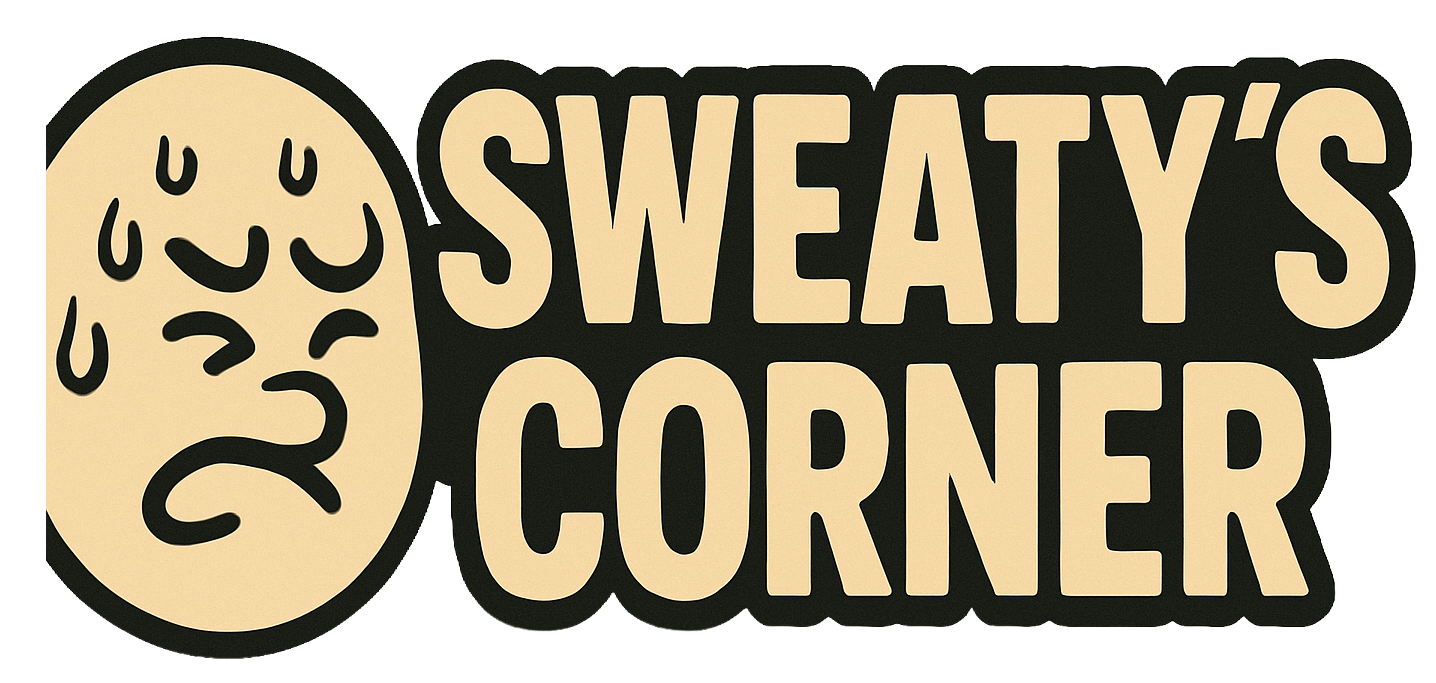No, Independent media isn't going to save us
Independent Media is important. But does it replace the legacy media? No. It is splintering attention, and continuing the ideological siloing. Lather, rinse, repeat.

I have been drafting a longish post on how (and why) the Auto industry is worth following to understand economics, but then this hit my inbox (this one is unlocked):

It is a little preening, as they just signed Catherine Rampell who exited the WaPo. I guess this is good. I like Ms. Rampell, one of the gems who remained at the Post.
Mr. Last then goes into his usual three parts, the first of which is a quite factual telling of the rise of big journalism from the Watergate era, the strength of the local and rise of national media, and the destruction wrought by the Internet.
Truth is, that in the 70's and 80's, your local paper thrived because they were the place people advertised locally. I delivered two local papers in the late 70's and early 80's The San Jose Mercury News and the San Francisco Chronical. Rain or shine, 7 days a week, 365 days a year, I got up before 4 AM bicycled out to the drop, folded, and then delivered to my customers, and once a month I would go out in the evenings to collect (it was frustrating how often people would dodge my ringing of their doorbell).

The industry wasn't supported by the paid subscriptions. I believe when I started delivering the Mercury News, it was $6.50 a month for 7 days, and $2.75 for Sundays only. Even us carriers knew that the real money was in the classified ads, and the business ads placed inside the edition.
People paid a lot of money for their classified ads because if you wanted to sell your car, your furniture, or anything, to reach people, they needed to have their ads in the local paper. These ads were expensive, typically 30 to 50 cents per word, so you got terse, but a remarkably creative way to describe what you were selling.
This allowed small regional papers like the Merc and the Chron to field reporters all over the world, to be able to do original reporting across the globe. That takes metric assloads of money to support. And local classified and business ads provided those funds.
The internet hit, and Craig Newark built "Craig's List" and created a simple way to post classified ads, microtargeted regionally and for free?
The newspapers didn't know what hit them.
The premise that Mr. Last then promotes is that small, independent media like The Bulwark are the future.
His second section goes on about how oligarch capture of the legacy media[1] is rapidly turning these outlets into propaganda operations, captured by the increasingly autocratic administration.
And one of his hobby horses is the loudness that the legacy outlets in 2024 were in countering Harris' claim that The Heritage Foundation's Project 2025 was Trump's plan. He even picks on USA Today[2]:

He then goes on to say:
Once authoritarianism shows up to the party, there can be only two kinds of media:
- Propaganda that is sanctioned by the regime
- Independent media that exists to see the authoritarian project ended
There is no third way. Eventually, every media institution will have to choose a side.
It is desperately hard for legacy media institutions, which have always existed in the sun-dappled space of liberalism, to recognize this unpleasant reality. It’s even harder for them to choose anti-authoritarianism.
They have too much institutional memory, too deep an attachment to the Before Times. And too much to lose.
Ok, but is it really? I mean the major media outlets for the entire history of the United States have been owned by (checks notes) very wealthy people who had agendas, and as the saying goes, don't get into arguments with people who buy ink by the rail tak car load.
These wealthy people though haven't always been aligned to the capital class, and in fact enjoyed tweaking the capitalist's noses.
Those days are largely done, and I agree with much of Mr. Last's analyses on this.
But, is the reader funded model really the path?
The next premise is that outlets like The Bulwark, and others, where advertising (classified and display ads) aren't the funding mechanism, but instead you publish high quality content and enough people open their wallets to pay for the access,a nd thus you can afford writers, journalists, editors, graphics design, and the like.
Substack's original premise was that they would provide a platform that was completely democratic. Anyone could sign up, and write. They would handle the back end, the infrastructure, allowing you to build an audience. And once you found a regular audience, you could connect Stripe to your account and people could pay you. All they would take is a mere 10% to cover their "costs".
To bootstrap this, they sponsored some industry writers, including people like Casey Newton, Ryan Broderick, Bari Weiss and others to sed the ecosystem.
And they were modestly successful. Lots of writers flocked to the site, but it was clear that there were an elite tier, people who had enormous audiences, and were generating money.
All the while changes in the wider world were mounting. Elon Musk bought Twitter, lighting $44B on fire[3] and blocking Substack links on Twitter, so they built the "Notes" feature. This social media adjunct has shifted the priroities of the Substack founders. No longer could they sit back and watch the ebb and flow of creators and their audiences. There is now an algorithm, a way to game the system. To enhance the revenue generation, and to punish the laggards.
I experienced this in the early spring when there were informal hard caps on subscribers allowed for unpaid substacks.[4]
And just this week, Bari Weiss' The Free Press was sold to CBS for $150M and she has been elevated to the news editor for CBS. Not bad for an anti-Woke culture warrior.
It is this ecosystem that Mr. Last touts as the future of media.
I will counter that it isn't and it can't be.
Why it can't be
Let's look at the numbers. The Bulwark is successful, having nearly (or over) a million subscribers, and over 100,000 paid subscribers. That is a lot, paying $10 a month or $100 a year. Let's say that each annualized subscription is $110[5].
100K subscribers at $110 per year is $11M dollars. Substack takes 10% of that, so they gross $10M give or take.
That sounds like a lot. But an internet search says they have 19 or 20 staff. I presume that is the headline names (Last, Kristol, Longwell, Charen, etc) and editors, designers, and back end support people. That number might be low.
I can get to 15 of the big names, and they are all probably pretty pricey. Let's assume that they are fully burdened at $250K each.
There are 9 support staff. They are usually less expensive, but they still need benefits. Let's say $175K each.
Then there are some part timers (think George Conway III and Erik Edelman) that are probably on a retainer. Let's say $100K each. Ansd let's assume that there are 8 of them.
That is (15 X $250K) + (9 X $175K) + (8 X $100K), or $3.75M + $1.575M + $0.8M or $6.125M in salaries alone. That leaves a net profit of $3.9M.
That sounds like a lot, but is it? I know that Sarah, Tim, Bill, and others do travel. Joe Perticone is in DC so he spends a lot of time on the hill.
But to open a bureau in say Europe, or to do deep reporting across the country, or to hire stringers, that money isn't a lot.
And sure, they do some live shows, and sell merch, but it is difficult to see that actually being a huge multiplier.
As a comparison, for the year that ended on June 30, 2025, the NY Times spend $2.3B dollars on salaries, reporting and distribution. That is a butt-load of money. That is what scale brings.
No, the small boutique outlet that mostly publishes meta commentary and opinion isn't a replacement.
But but but - TPM has been successful
I had someone tell me that Josh Marshall's Talking Points Memo (TPM) that haws been operating since 2000, is progressive leaning, and successfully transitioned into a paid readership model (from a pure display ads funding model).
They have abut 36K paid subscribers, averaging $100 per set of eyeballs. They have 15 staff members, and their pull is $3.6M. They seem to pay for their own infra, so let's assume that $600K per year goes to keepign the lights on, the servers warm, and the emails going out. That is $3M. Divide that by 20 people, and that is $200K per headcount.
Not enough to send people into the field and do deep reporting.
Why the reader funded model isn't scalable
I will use myself as an example. I make a good living, and I pay for 33 substacks, the NY times, the Atlantic, and The Economist (and I am considering adding the Financial Times to that list). My spend just on Substack is over $2,000 per year.
I am probaby in the top 1% of subscribers. Most people pay for 1-5 substacks (this is a tricky stat to get to, so it is anecdata). 5 subscriptions at $5 a month is $25 per month, or $300 a year. That is more than my NY Times, and my Atlantic subscriptions cost, and I share them with my wife. And both of those outlets give me a LOT more to read.
What I am trying to say is that when the US median salary is ~ $83K, that $300 a year in subscriptions for news is about 0.3% of their wages. But my $2k is about 2%, enough to really be noticable.
This just can't scale, and if you are on Notes, you see perennial people asking for a model like Medium where you pay like $20 a month, and can read anything you want, with the writers getting micropayments based on how many views (this is also a bad model, especially for the biggest newsletters).
This is a cost/scalability issue that isn't easy to fix, and the gulf between the big pages (HCR, The Bulwark, The Free Press), the large pages (Jeff Tiedrich) and the rest of the riff-raff will drive the powers that be to focus on their revenue drivers, and screw the rest of the world .
Final thoughts
I get why Mr. Last likes to toot his (and The Bulwark's) horn, about how they are the future of journalism, but I must disagree.
They do not do enough original reporting (and they do not generate enough cash to support a lot of original reporting), and most of their comment is meta commentary. Not that there's anything wrong with that, but it isn't so much journalism than it is opinion.
I pay for that, because I like to read their takes. But if I want to read reporting, I go to the NY Times, The Economist, The Atlantic, and for a few months more The Washington Post. They do field reporters who are in the field, and they send people to hotspots when needed.
The Bulwark, it ain't all that.
1 - I refuse to call it mainstream media. That term is overwrought as a cudgel by the right, and frankly, much of their curated outlets are now the mainstream. Once Fox became the #1 in cable ratings, the title of mainstream shifted far to the right.
2 - I thought USA Today was only available outside the door of your room at the Mariott Courtyard, who would have thought that it was a legitimate media outlet. LOL
3 - it seemed like he was torching his reputation and his money whilst destroying Twitter. But it seems that in the end, it was a very savvy investment, and it helped him to buy Donald Trump a victory in 2024, and paid handsome dividends.
4 - Turns out that about two thousand free subscribers is a hard limit for free stacks.
5 - a 50/50 split between monthly subs and yearly subs. They also have a $500 Founder's tier but I assume that is a trivial number overall.





